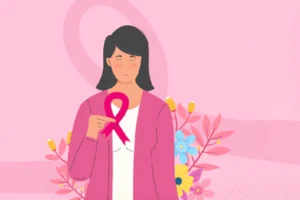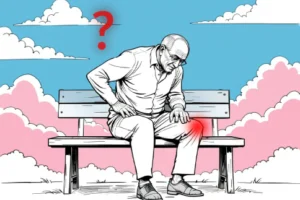What if your brain began erasing itself before your 20th birthday? Imagine preparing for college entrance exams only to have words vanish mid-sentence and memories fade like a half-remembered dream. In 2023, a 19-year-old became the youngest person ever diagnosed with Alzheimer’s—a disease we barely understand in the elderly, let alone in teens. This case challenges everything we thought we knew about Alzheimer’s disease and raises profound questions about its origins.
A Case That Defies Expectations
At just 17 years old, two years before his diagnosis, this young man’s life took an unexpected turn. Once full of youthful energy and academic promise, he began struggling with memory lapses—misplacing belongings, forgetting recent events, and even dropping out of school.
His mother recalls with a mix of heartbreak and disbelief, “One day, he looked at me like I was a stranger.” After two years of misdiagnoses—depression, “exam stress,” even accusations of laziness—a PET scan revealed the unthinkable: shriveled hippocampi (the brain’s memory hubs) choked by amyloid plaques, the sticky protein clumps and abnormal levels of tau protein—biomarkers typically seen in patients over 70.
Here’s what makes this case extraordinary: genetic testing revealed none of the usual culprits associated with early-onset Alzheimer’s. Mutations in genes like PSEN1 or APP, which are almost always present in patients diagnosed before age 30, were absent. Nor did the patient carry the APOE4 allele, a common genetic risk factor for sporadic Alzheimer’s. Even more puzzlingly, there was no family history of dementia or other underlying conditions like head trauma or infections to explain his symptoms.
This diagnosis is rewriting textbooks. Before this case, the youngest known Alzheimer’s patient was 21 years old and carried a clear genetic mutation. The absence of such markers in this 19-year-old suggests that we may be dealing with an entirely new pathway for the disease.
The Diagnostic Maze: Beyond Misconceptions
Alzheimer’s typically strikes after 65, but 5-10% of cases are early-onset, with symptoms appearing as early as age 30.
This case defied all norms. No family history. No known genetic mutations. Just a healthy teen’s brain collapsing without warning.
Did You Know?
Over 6 million Americans have Alzheimer’s, but only 1% to 10% of all Alzheimer’s cases occur in individuals under 65 (mostly genetic mutations).
Clinical tools like PET scans and cerebrospinal fluid analysis remain the gold standard for diagnosing such cases. However, only about 35% of global clinics consistently access these resources, according to a 2022 report in Lancet Neurology. This gap in diagnostic capability leaves many patients, especially the young, misdiagnosed or overlooked.
Breaking Barriers: CRISPR, AI, and the Fight for Time
This discovery forces researchers to rethink how Alzheimer’s can manifest. Could environmental factors or unknown genetic mutations be at play? Or is it possible that this case represents an entirely new subtype of the disease? As neurologist Jianping Jia and colleagues noted in their study, “Exploring the mysteries of young people with Alzheimer’s disease may become one of the most challenging scientific questions of the future”
The case ignited urgency in Alzheimer’s research. Scientists are now probing for novel genetic triggers, while clinicians trial radical tools:
CRISPR Gene-Editing: Experimental therapies aim to correct DNA errors that drive amyloid overproduction, as seen in early-stage trials at MIT and Stanford.
AI Predictors: Researchers at the Mayo Clinic have developed algorithms that detect Alzheimer’s risk from speech patterns up to 15 years before symptoms emerge.
Anti-Amyloid Drugs: Lecanemab, recently approved by the FDA, slowed cognitive decline by 27% in clinical trials, offering cautious optimism.
Data Point:
A 2023 study published by the Alzheimer’s Association found that up to 1 in 5 Alzheimer’s cases are misdiagnosed, with nearly 11% of clinical diagnoses being incorrect and another 11% of cases missed entirely due to overlapping symptoms with other conditions such as Lewy body dementia or vascular dementia.
The Human Side of Early-Onset Alzheimer’s
While this particular case grabs headlines for its rarity, it also underscores the devastating human toll of early-onset Alzheimer’s.
Imagine being a teenager—your whole life ahead of you—only to find yourself forgetting yesterday’s events or struggling to recognize familiar faces. For patients like this young man, even basic daily tasks become monumental challenges.
Stories like these also highlight the emotional burden on families. In other cases of early-onset Alzheimer’s, such as that of Mary—a woman diagnosed in her 50s—family members often become caregivers long before they expected to take on such roles. Mary’s daughter Kamaria described having to navigate her mother’s rapid cognitive decline while grappling with her own grief and responsibilities. These experiences remind us that Alzheimer’s isn’t just a medical condition; it’s a deeply personal tragedy.
Tomorrow’s Hope: A World Without Alzheimer’s?
This case has major implications for medical research. It suggests that Alzheimer’s may be far more complex than previously thought, with multiple pathways leading to its development. Understanding these pathways could open up new avenues for treatment—not just for rare cases like this one but for millions worldwide.
As Rudolph E. Tanzi put it, “The advancements in Alzheimer’s research give us reason to hold onto hope, each breakthrough a beacon in the night”.
Currently, most diagnostic tools focus on identifying symptoms after significant brain damage has already occurred. However, researchers are exploring biomarkers—measurable indicators in blood or cerebrospinal fluid—that could allow for earlier detection and intervention. If we can identify Alzheimer’s before symptoms begin, we might one day prevent its devastating effects altogether.
Looking Forward
Alzheimer’s in a teenager is biology’s cruelest paradox—but this case could unlock therapies for millions. As science races to decode the disease, one truth remains: today’s medical mysteries fuel tomorrow’s cures.
So while this young man’s journey is undeniably heartbreaking, it also serves as a rallying cry—for scientists searching for answers, for families advocating for better care, and for all of us to support advancements in Alzheimer’s research.
Let’s work together to ensure that no one—young or old—ever has to face this battle alone.
Engage Further:
Spot Early Clues: National Institute on Aging | Join the Fight: Alzheimer’s Association Clinical Trials




